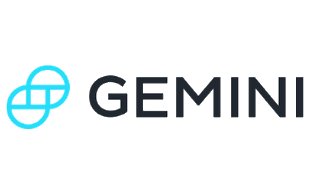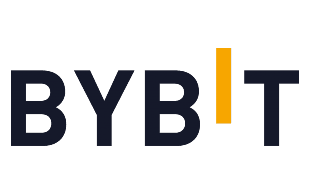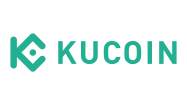Disclaimer: This page is not financial advice or an endorsement of digital assets, providers or services. Digital assets are volatile and risky, and past performance is no guarantee of future results. Potential regulations or policies can affect their availability and services provided. Talk with a financial professional before making a decision. Finder or the author may own cryptocurrency discussed on this page.
OpenSea
| Pros | Cons |
|---|---|
|
|
Rarible
| Pros | Cons |
|---|---|
|
|
About OpenSea
OpenSea is built on the Ethereum blockchain and was founded in 2017, and it’s one of the first and largest NFT marketplaces. OpenSea is one of the most well-known marketplaces, making Rarible a bit of an underdog in this marketplace comparison.
As of 2022, OpenSea has over one million registered users and around 80 million visits per month, as reported by Similarweb.
OpenSea is known for its multiple NFT categories like art, music, sports, trading cards and more. Some marketplaces only specialize in one NFT niche, but OpenSea has its hands in everything, classifying it as a mixed marketplace. When the market first launched, it was an Ethereum-only platform. Recently, users can now buy and sell NFTs minted using Solana on OpenSea, a function in beta at the time of writing.
OpenSea transactions are on-chain, so there are gas fees for trading and minting. There is also a 2.5% marketplace fee for each trade. The platform supports over 150 cryptocurrencies and multiple Web3 wallets, but OpenSea doesn’t support fiat payments for NFTs.
If you’re a creator, using OpenSea means you can set your own royalty percentage up to 10%. Also, becoming a creator is as easy as creating an account and verifying your info.
However, since it’s so easy to create an account with OpenSea, fake NFTs are rampant on the platform. It’s been reported that around 80% of all NFTs on the platform are fraudulent, according to OpenSea.
About Rarible
Rarible is a mixed, multichain marketplace supporting four blockchains: Ethereum, Flow, Polygon and Tezos, with plans to integrate more. Rarible was founded in 2020, and has around 1.6 million users as reported by Business Insider.
Rarible is known for its content: pop culture-inspired NFTs, featuring categories such as avatars, celebrities, pop culture, metaverse content, music and gaming. Users can easily explore trending collections and attend live auctions.
Transactions are on-chain with Rarible, but creators have the option of minting for free. In this case, the buyer of the gasless NFT pays the gas fee. Additionally, creators have the ability to set their royalty percentage to any percentage — dwarfing OpenSea’s 10% maximum. Rarible takes 2.5% from buyer and 2.5% from seller for each NFT transaction.
Since Rarible is a multichain marketplace, you need the correct native currency for the blockchain that the NFT is on to finalize a purchase. Rarible also accepts credit cards (Visa and Mastercard) but only for fixed price items; auctions are crypto-exclusive. OpenSea only accepts cryptocurrency for all sale methods at the moment, so this is a huge leg up.
OpenSea vs. Rarible snapshot comparison
Compare royalty percentages, blockchains and wallets supported here.
| OpenSea | Rarible | |
|---|---|---|
Year founded | 2017 | 2020 |
Supported blockchain(s) | Ethereum and Solana | Ethereum, Flow, Polygon and Tezos |
Supports minting | Yes | Yes |
Types of available NFTs | Mixed marketplace | Mixed marketplace |
Wallet compatibility | Multiple wallets supported, including MetaMask, Torus and TrustWallet. | Multiple wallets supported, including Coinbase, Formatic and Metamask wallet. |
Accepted currencies | 150+ currencies including ETH, WETH and USDC. ETH required for gas fees. | Crypto and fiat purchases. Users need native currency for blockchain they’re buying on. |
Fees/costs | Buyer fee: None Seller fee: 2.5% | Buyer fee: 2.5% Seller fee: 2.5% |
NFT Royalties | Up to 10% | Up to 100% |
OpenSea vs. Rarible on buying and selling NFTs
Both Rarible and OpenSea have a variety of NFTs for sale, given they’re both mixed marketplaces. However, Rarible allows for fiat purchases on fixed price assets.
OpenSea
There are four NFT sale methods available on OpenSea:
- English auction. Timed, minimum price auction. If the auction ends with a bid of less than 1 ETH, the seller can choose the highest bid or cancel the auction.
- Dutch auction. Seller puts NFT up for sale at a ceiling price that lowers a predetermined percentage over time. Buyers bid on the NFT, and if the NFT’s price drops enough to match a bid, the buyer that made the bid wins the item.
- Fixed-price. Seller lists the NFT for a price that never changes.
- Bundles. Sellers list up to 30 NFTs under one transaction.
Paying with cryptocurrency is required for each sale method, and OpenSea takes 2.5% of the final sale in each transaction. OpenSea requires a supported Web3 wallet and cryptocurrency to make a purchase, and users can buy Ethereum and Solana NFTs.
Rarible
There are three sale methods on Rarible:
- Fixed-price. Seller lists NFT for sale at a price that never changes. Users can use cryptocurrency or a credit card for these purchases.
- Timed auction. A timed auction, the highest bidder wins. Users can’t use credit cards for this sale method.
- Open auction. An open auction where anyone can make a bid at any time, and the seller can accept or decline any bid at any time.
Buyers on Rarible can use a credit card to make purchases on fixed price items — great for newbies looking to get into the crypto space. However, all buyers must have a supported Web3 wallet to make a purchase regardless of payment method.
Rarible takes 2.5% from the buyer and 2.5% from the seller, whereas OpenSea only takes 2.5% of the final sale price period.
Compatible exchange: Gemini Cryptocurrency Exchange
Minimum Deposit
Cryptocurrencies
Fiat Currencies
- Wide range of exchangeable currencies
- User friendly
- Newcomer incentives
- Insurance on currency balances up to $250k
- Balances can earn interest
- High fees on mobile app
- Missing some notable top 20 currencies
- No linked debit cards available
Gemini's strongest point is its Gemini Earn program, which allows users to earn up to 7.4% interest on specified cryptocurrency balances.
Gemini has a wide selection of cryptos available for exchange on the platform. However, some notable entries from the top 20 by market cap are missing, such as Cardano and Solana.
| Deposit Methods | Bank transfer (ACH) PayPal Wire transfer (USD) Bank transfer (EUR and GBP) FAST transfer (SGD) Cubix Plaid Direct Payments (UK) |
|---|---|
| Deposit Fees | ACH transfer: none Wire transfer (USD): determined by your bank +$25 PayPal: 2.50% Cubix: none |
| Withdrawal Fees | ACH transfer: none USD wire transfer: $25 |
| Trading Fees | Trading: Dependant on transaction size: $10 or less: $0.99 $10–$25: $1.49 $25–$50: $1.99 $50–$200: $2.99 More than $200: 1.49% of order value Spread: 0.5% convenience fee on all transactions |
OpenSea vs. Rarible on creating NFTs
Want to skip gas fees when minting NFTs? Rarible has that option.
OpenSea
Becoming a creator on OpenSea is as easy as creating an account, verifying your information and signing in with a supported Web3 wallet.
OpenSea supports the following formats for NFT creation, size limit 100MB on all formats:
- GIF
- JPG
- PNG
- SVG
- MP4
- MP3
- WebM
- WAV
- GLB
- OGG
- GLTF
OpenSea requires creators to cover the gas fee for interacting with the blockchain. Creators can earn up to 10% in royalties when they mint with OpenSea.
Rarible
To create, users must sign in with their chosen Web3 account, then choose the blockchain they want to mint on: Ethereum, Flow, Polygon or Tezos.
Rarible supports significantly fewer file formats compared to OpenSea, also carrying a maximum size of 100MB:
- PNG
- GIF
- WEBP
- MP4
- MP3
While Rarible accepts fewer formats, it allows for gasless minting, sometimes called lazy minting. This means that the buyer of the gasless NFT finalizes the purchase, the NFT is officially placed on the blockchain and the buyer covers the gas fee. This is also called deferring the mint fee.
This is great in our opinion, since unsold NFTs won’t be as much of a loss for the creator. On OpenSea, if you mint an NFT and it never sells, you’re in the negative since you paid for the gas required to mint the file.
Rarible allows users to set their royalty percentage to anything they want — though it’s typically recommended that users keep royalties below 30% so potential buyers can see more resale value. While OpenSea’s 10% royalty percentage seems low compared to Rarible, 10% is right in line with many other NFT marketplaces.
Verdict
OpenSea might have the edge in terms of popularity and age, but for us, Rarible has some major advantages to consider.
Rarible lets users set their own royalty percentage, offers lazy minting, supports four blockchains and allows users to buy fixed-price items using their credit card. OpenSea’s only real advantage over Rarible is that it accepts more file formats and supports Solana — but it’s not enough to take the win overall.
OpenSea might be considered the “largest” NFT marketplace, but if it doesn’t start allowing functions that the newer marketplaces are putting out, it might lose the top spot. Additionally, OpenSea is dealing with the many fake NFTs plastered all over the platform, so for now, Rarible is the better choice for creators and buyers alike.
Compare other NFT marketplaces
Are you visiting from outside the US?
Whether products shown are available to you is subject to individual provider sole approval and discretion in accordance with the eligibility criteria and T&Cs on the provider website.
Ask a question
More guides on Finder
-
Top 29 NFT and cryptocurrency influencers in 2022
Check out the top tastemakers for crypto, NFTs, DeFi, Bitcoin and blockchain technology, from NYT experts to published authors and YouTubers.
-
Finder Awards 2022: NFT marketplaces
We compared over 30 NFT marketplaces to award the top platforms of 2022.
-
NFT vs. Crypto
Crypto and NFTs are far from the same thing – learn the differences.
-
Town Star review: An addictive P2E NFT farming simulation
In this Town Star guide you’ll learn how Gala Games’ free-to-play NFT farming simulator with P2E potential puts fun first.
-
NFT trading cards: What they are and how they work
Explore the world of NFT trading cards
-
My DeFi Pet game guide
My DeFi Pet is a blockchain game with many ways to interact with your NFT pets.
-
NFT statistics
The definitive ranking of the NFT adoption across 26 countries.
-
Crypto.com NFT marketplace review
Trade, mint and collect with Crypto.com’s NFT marketplace.
-
eBay NFTs review and guide
A deep dive into eBay’s foray into the NFT ecosystem, looking at everything from available categories to potential drawbacks.








